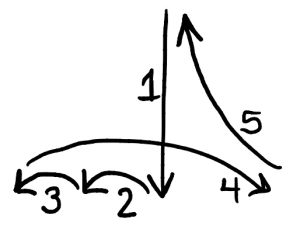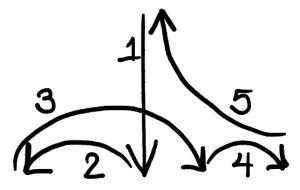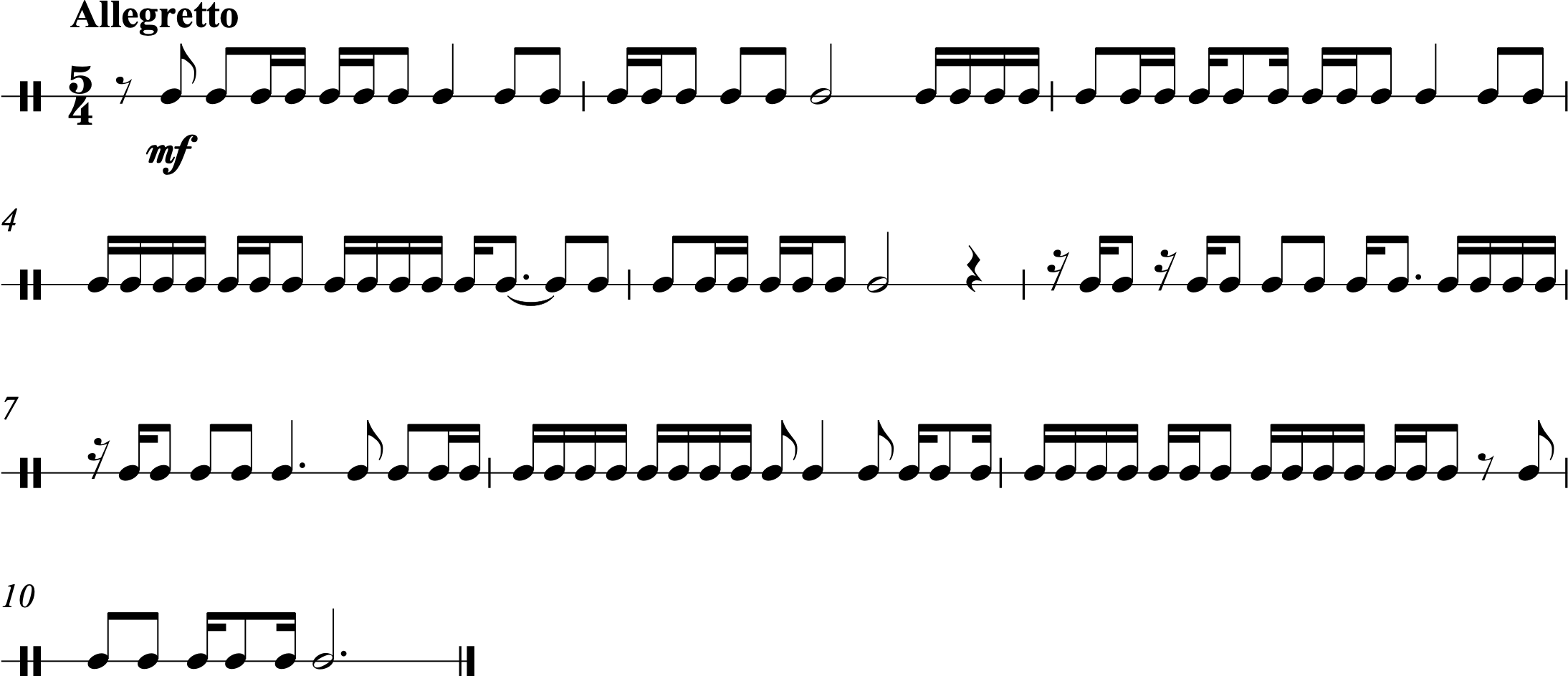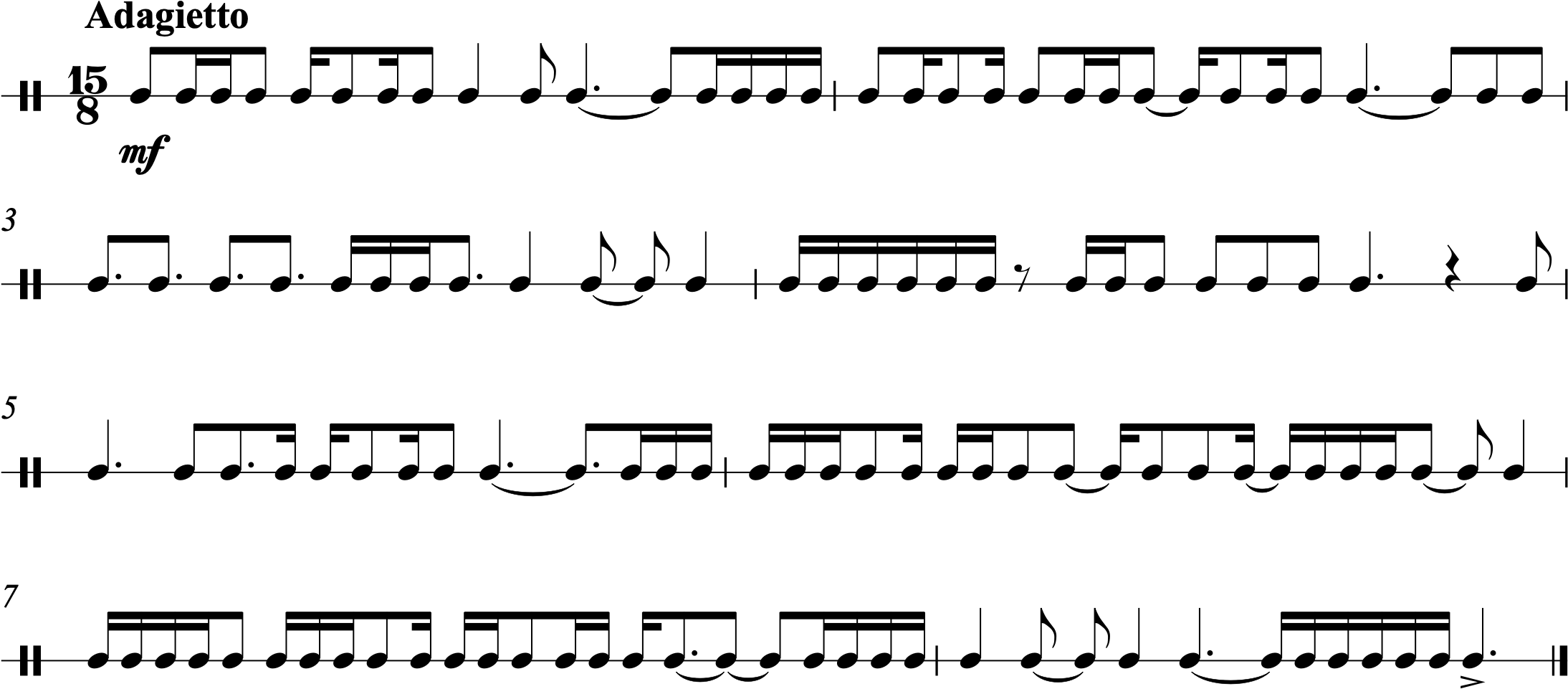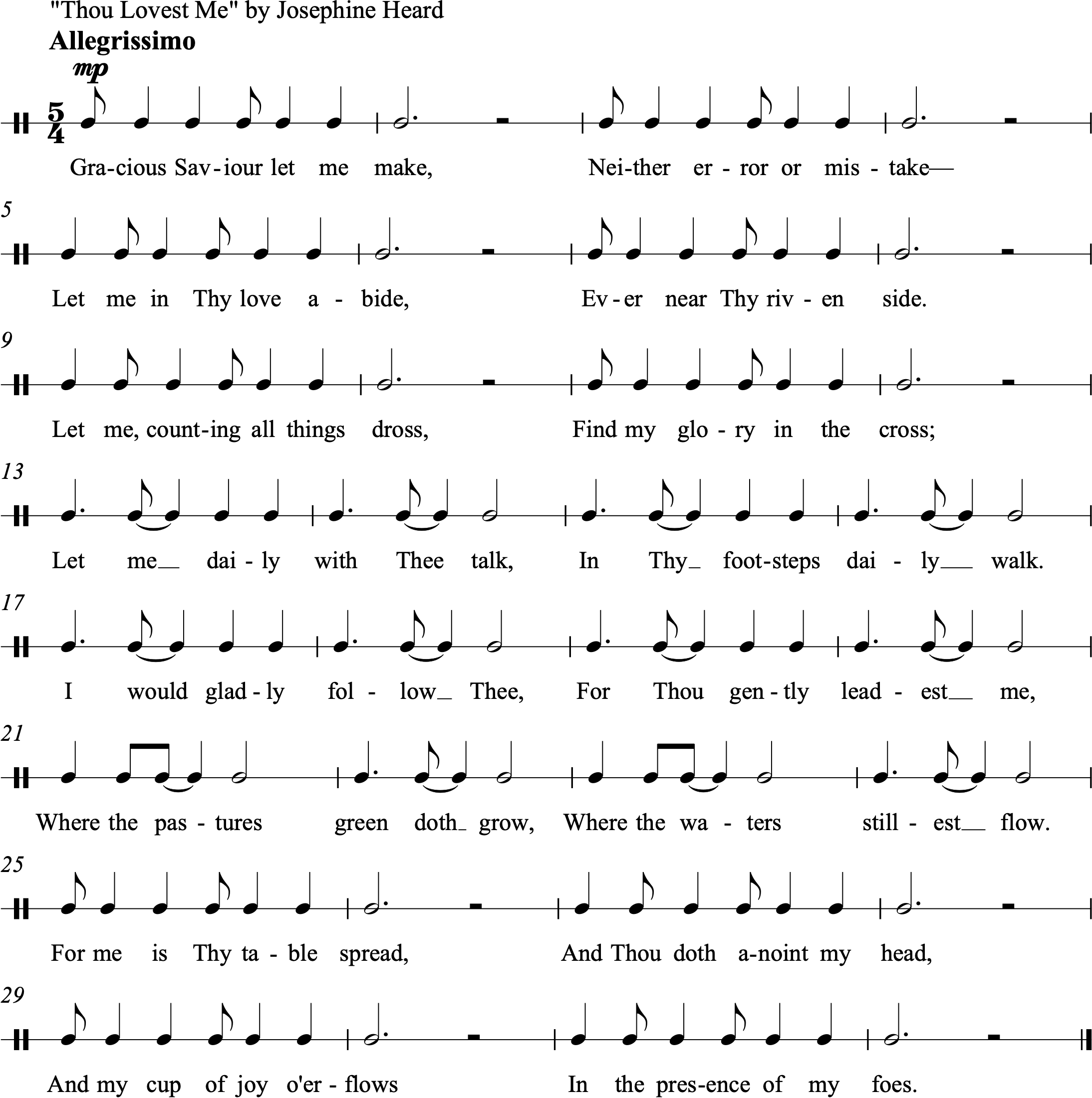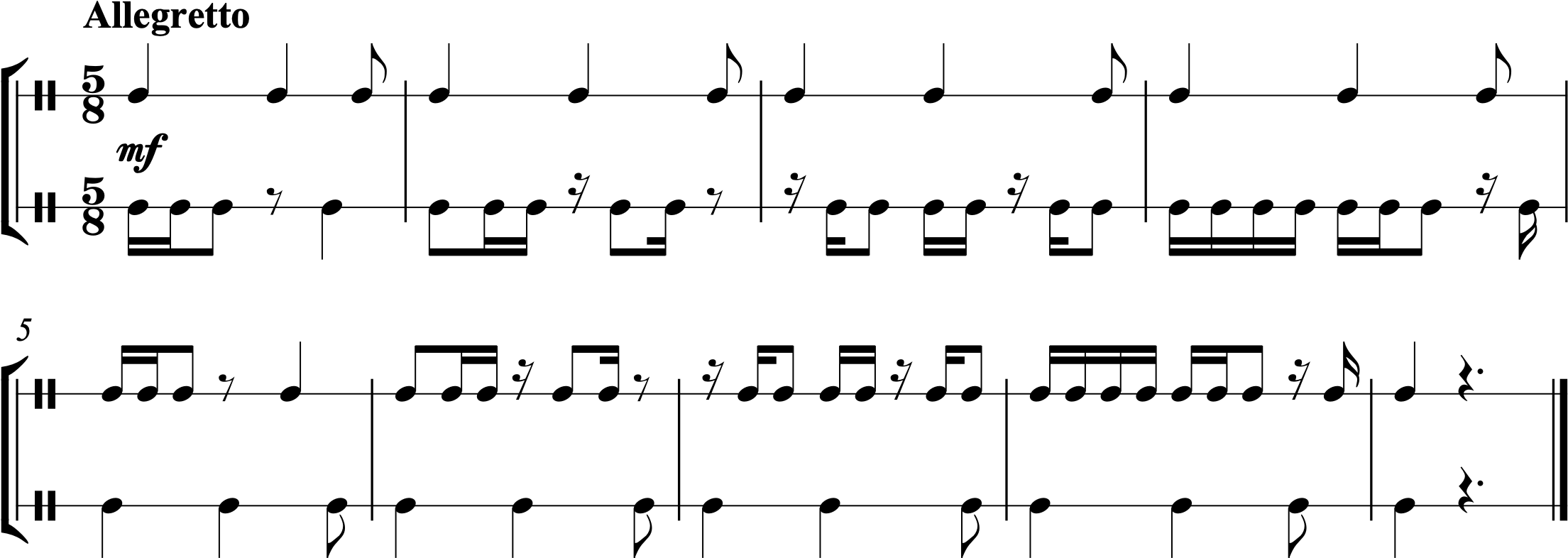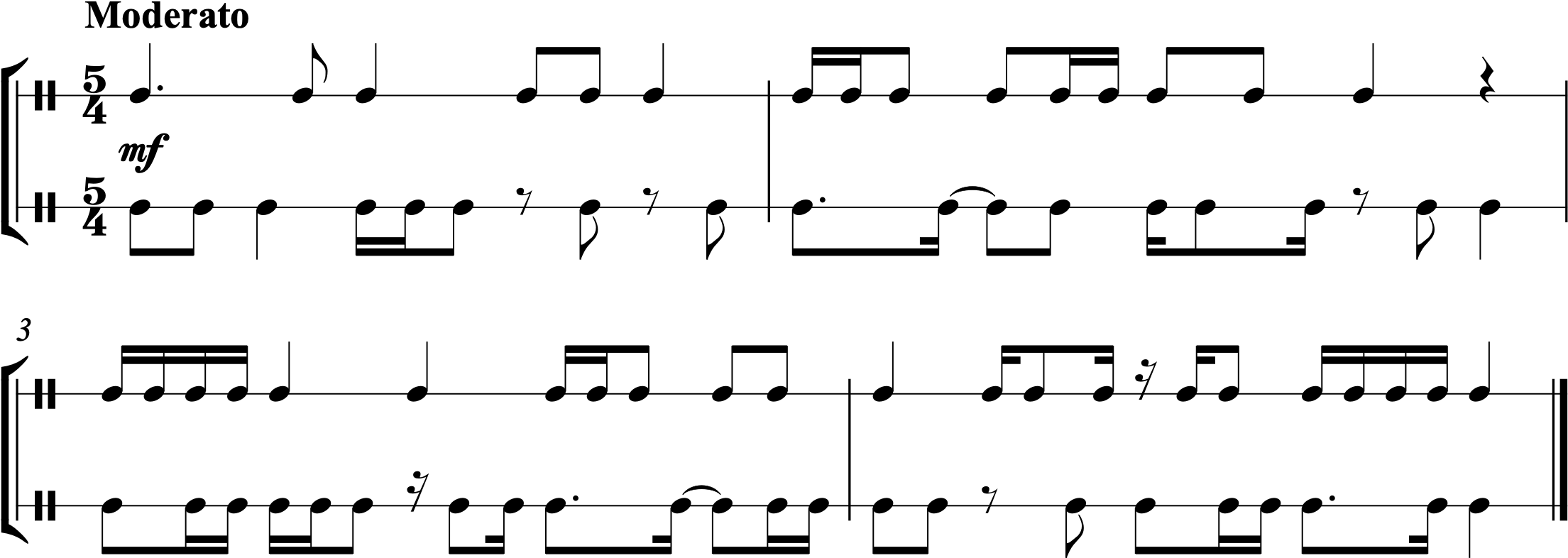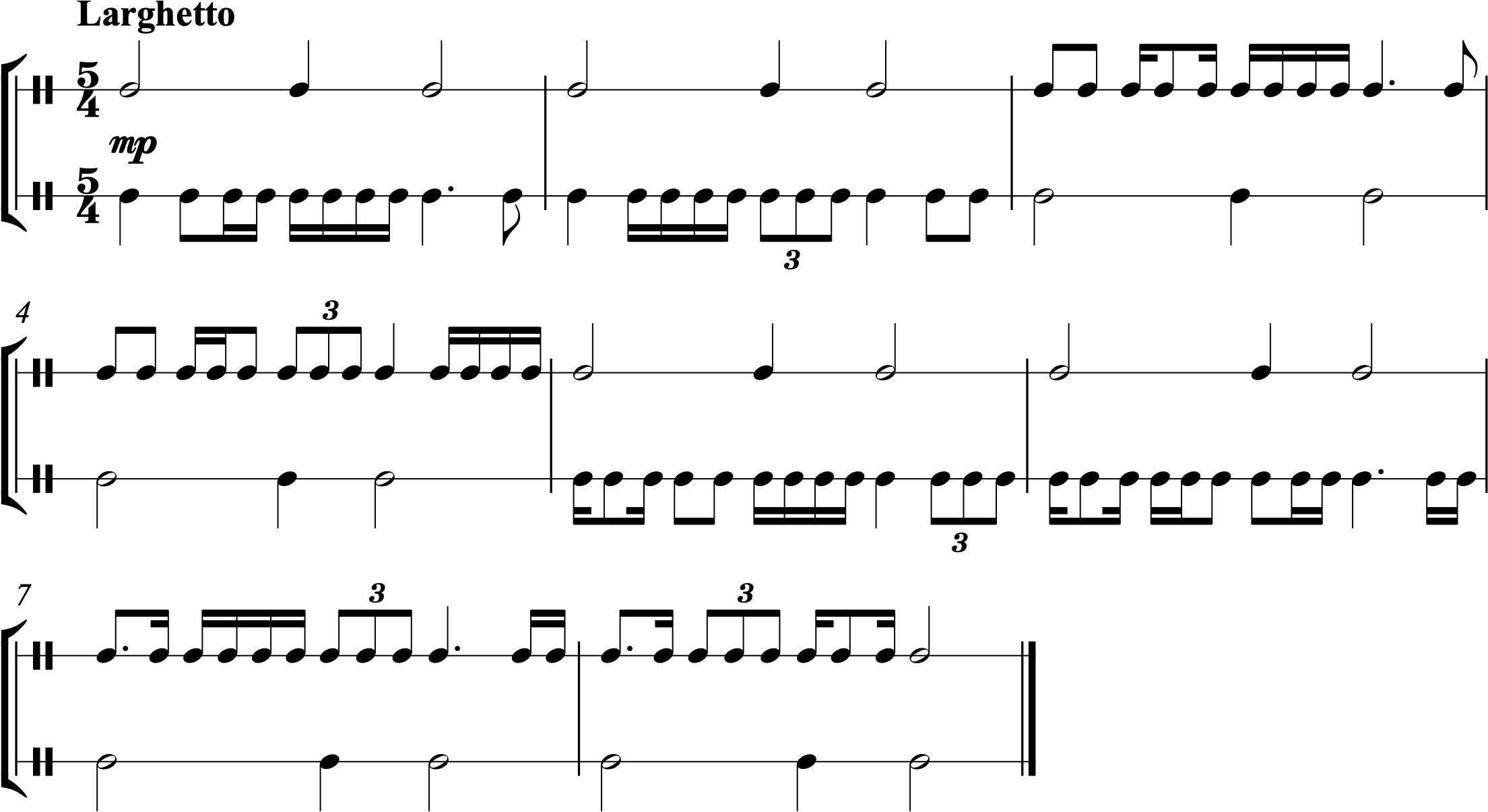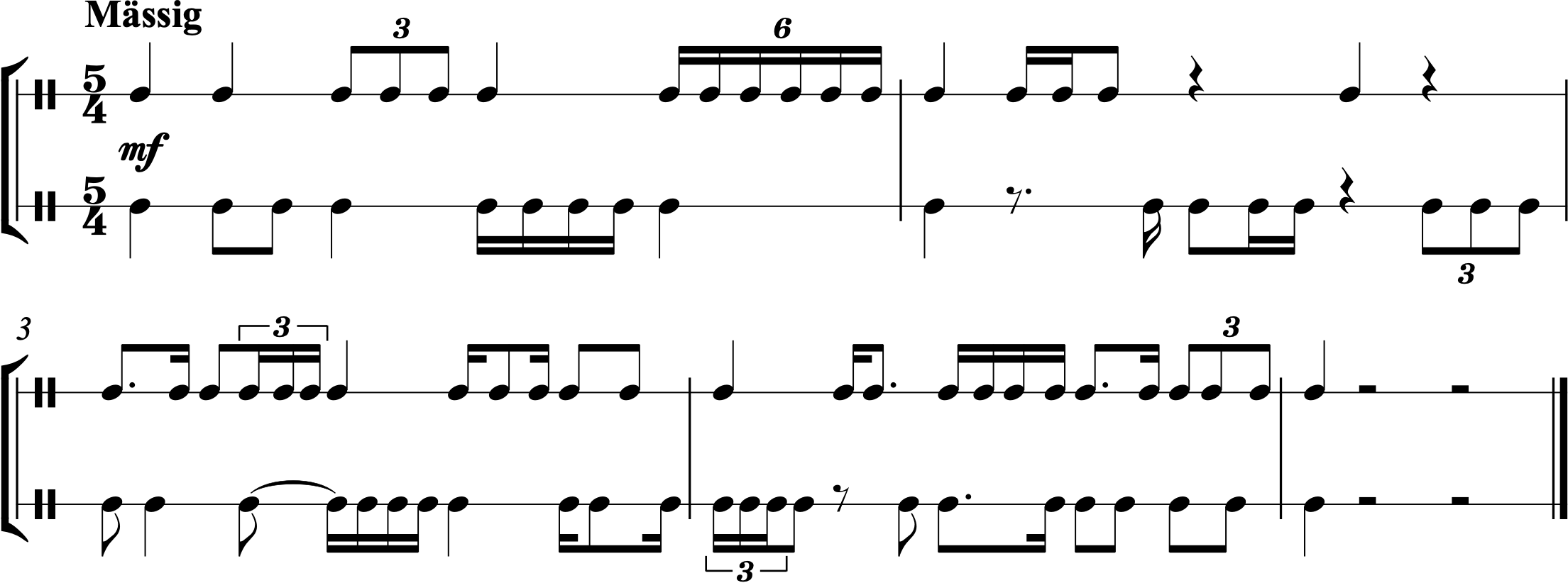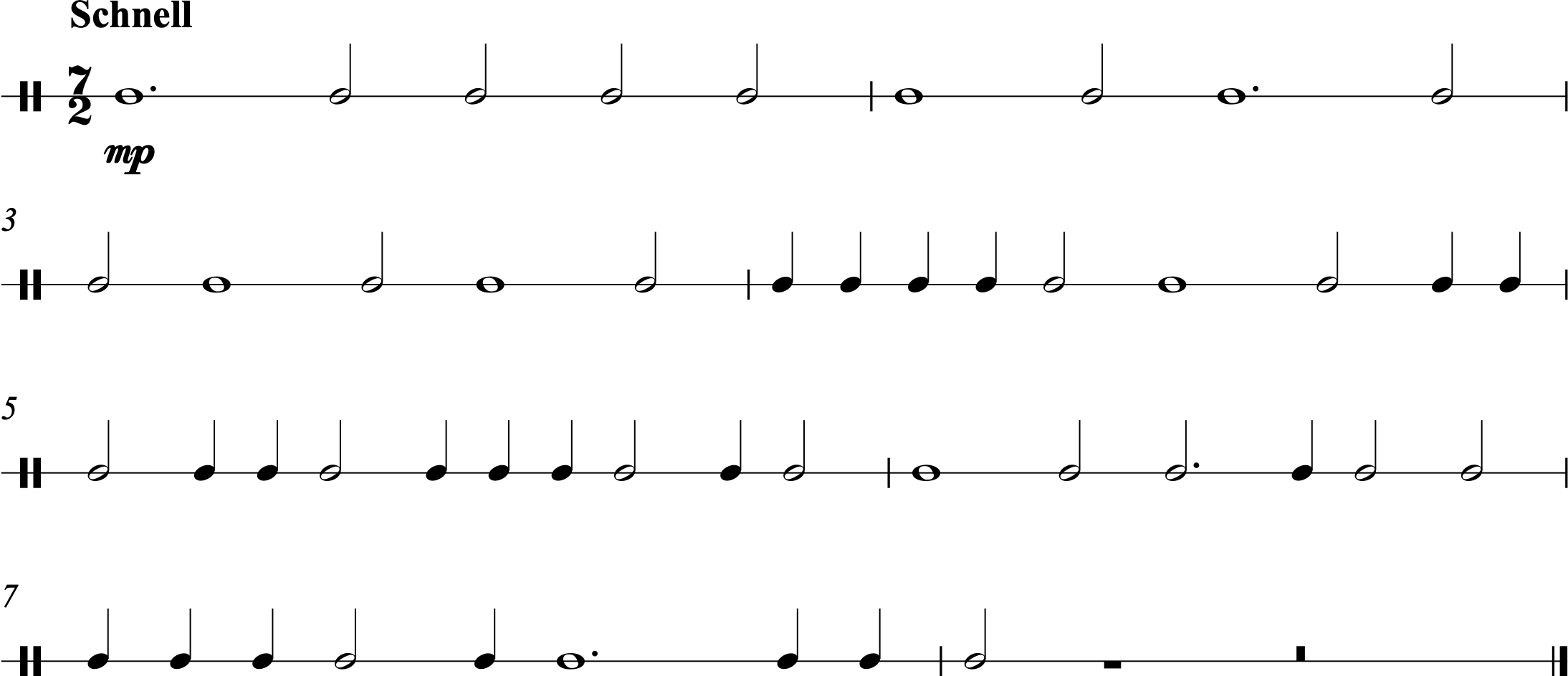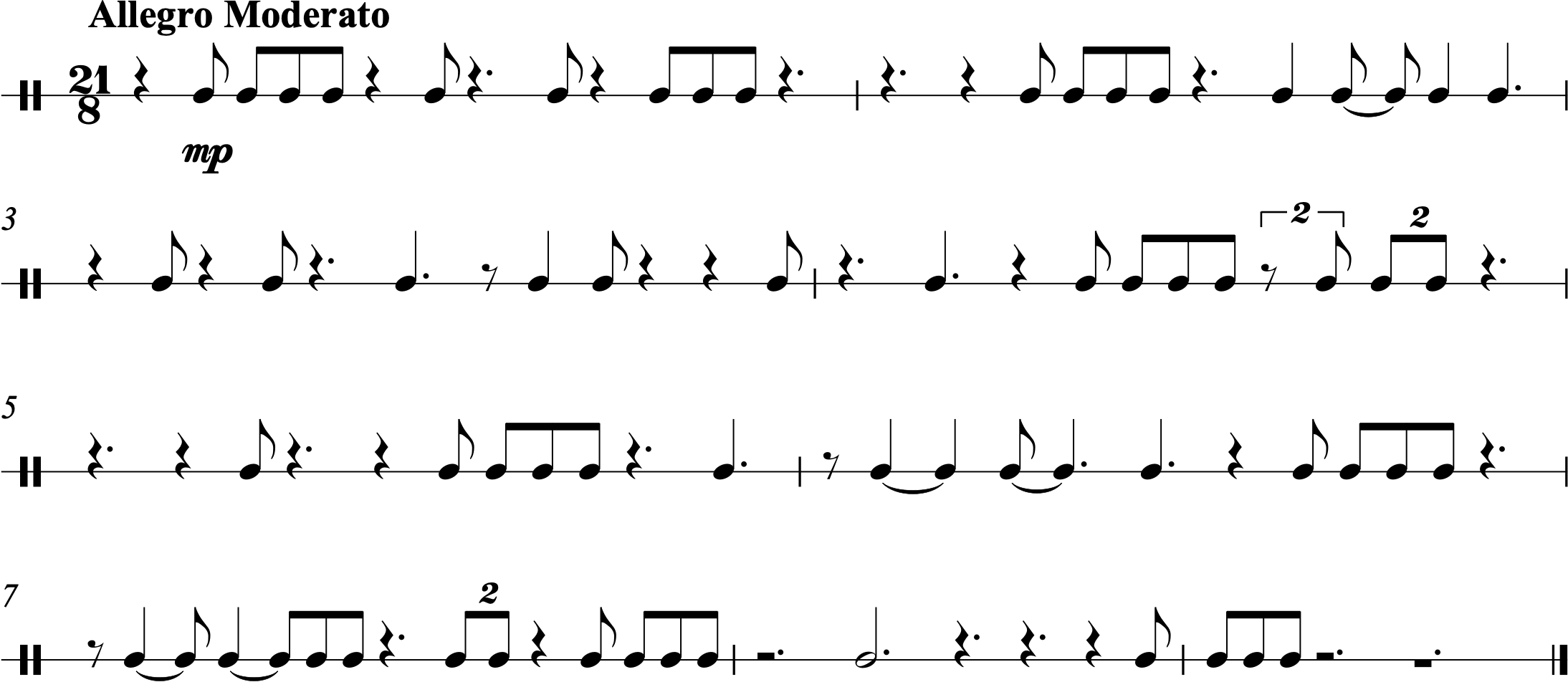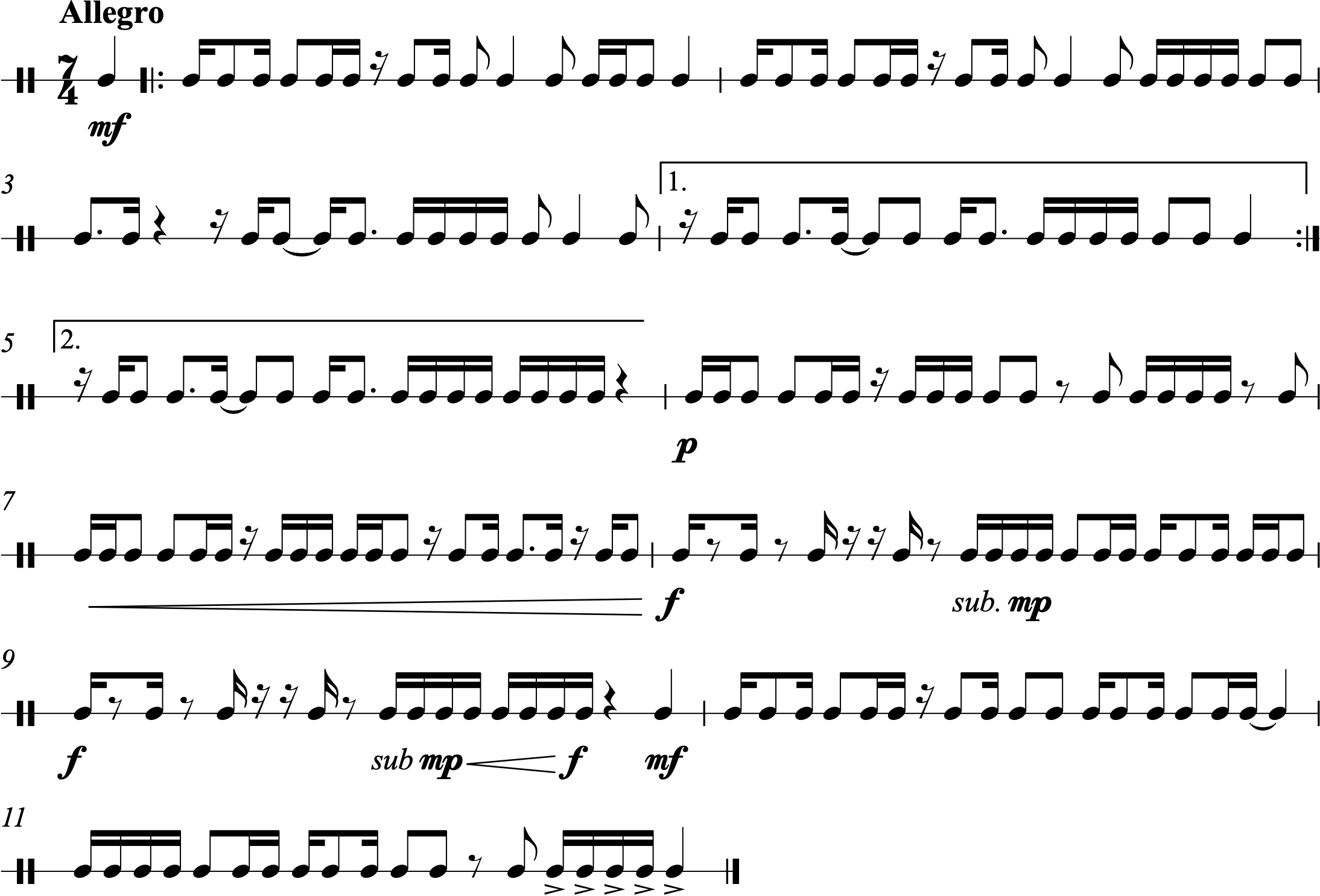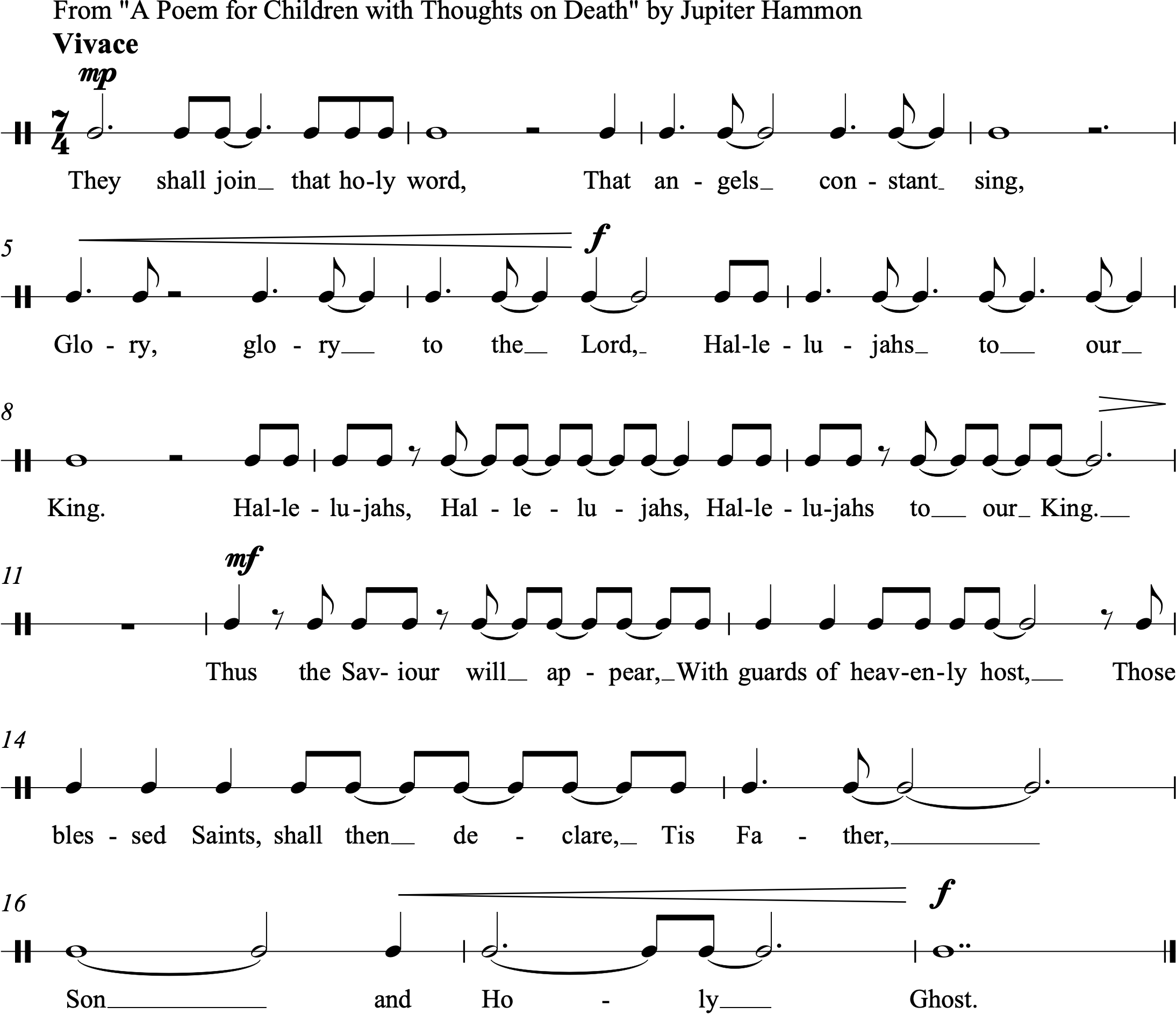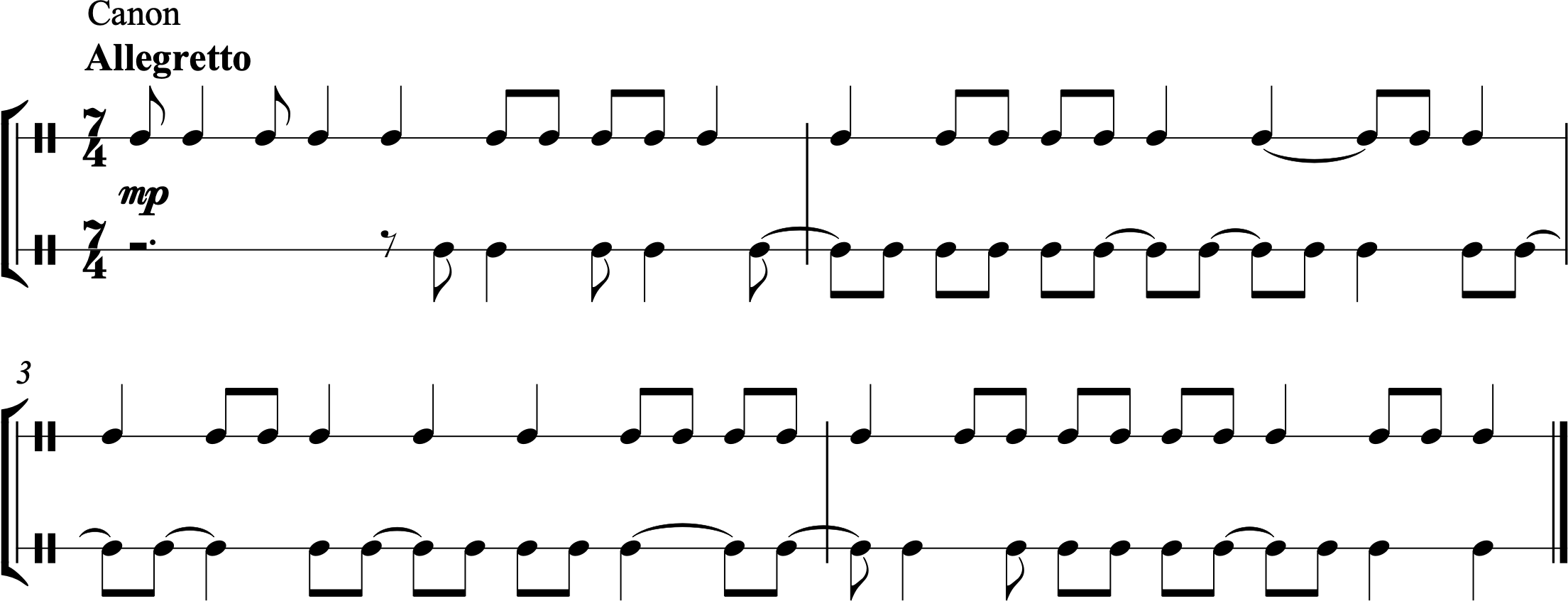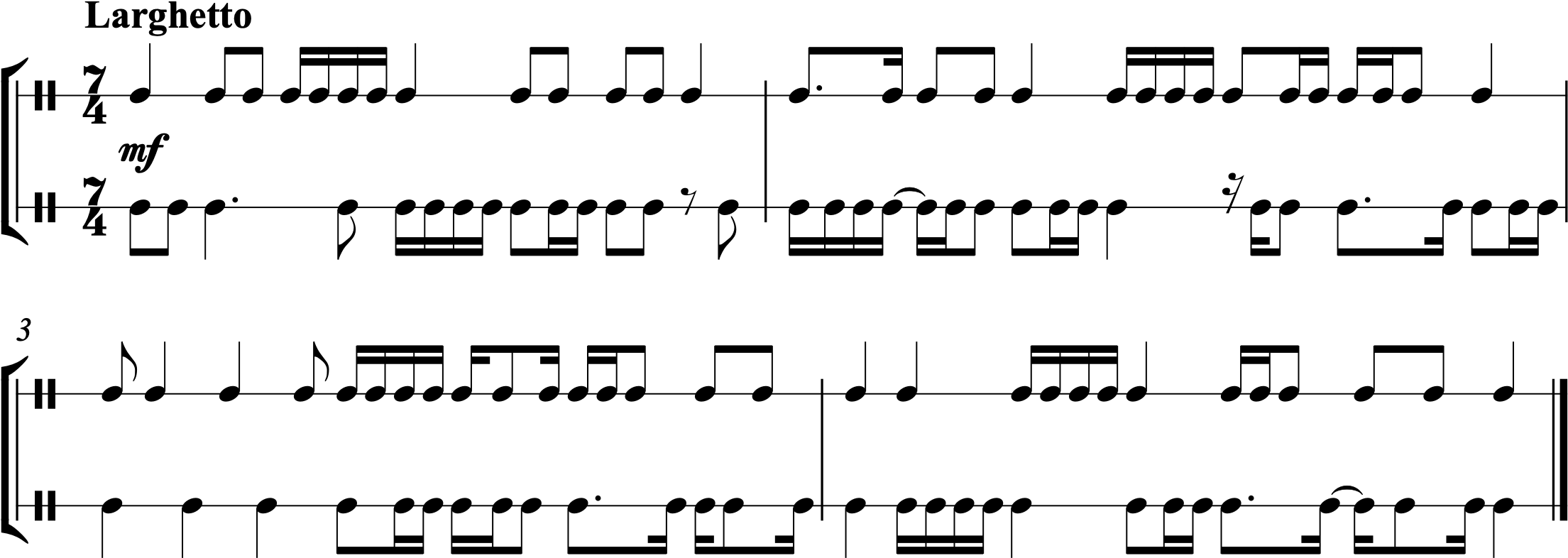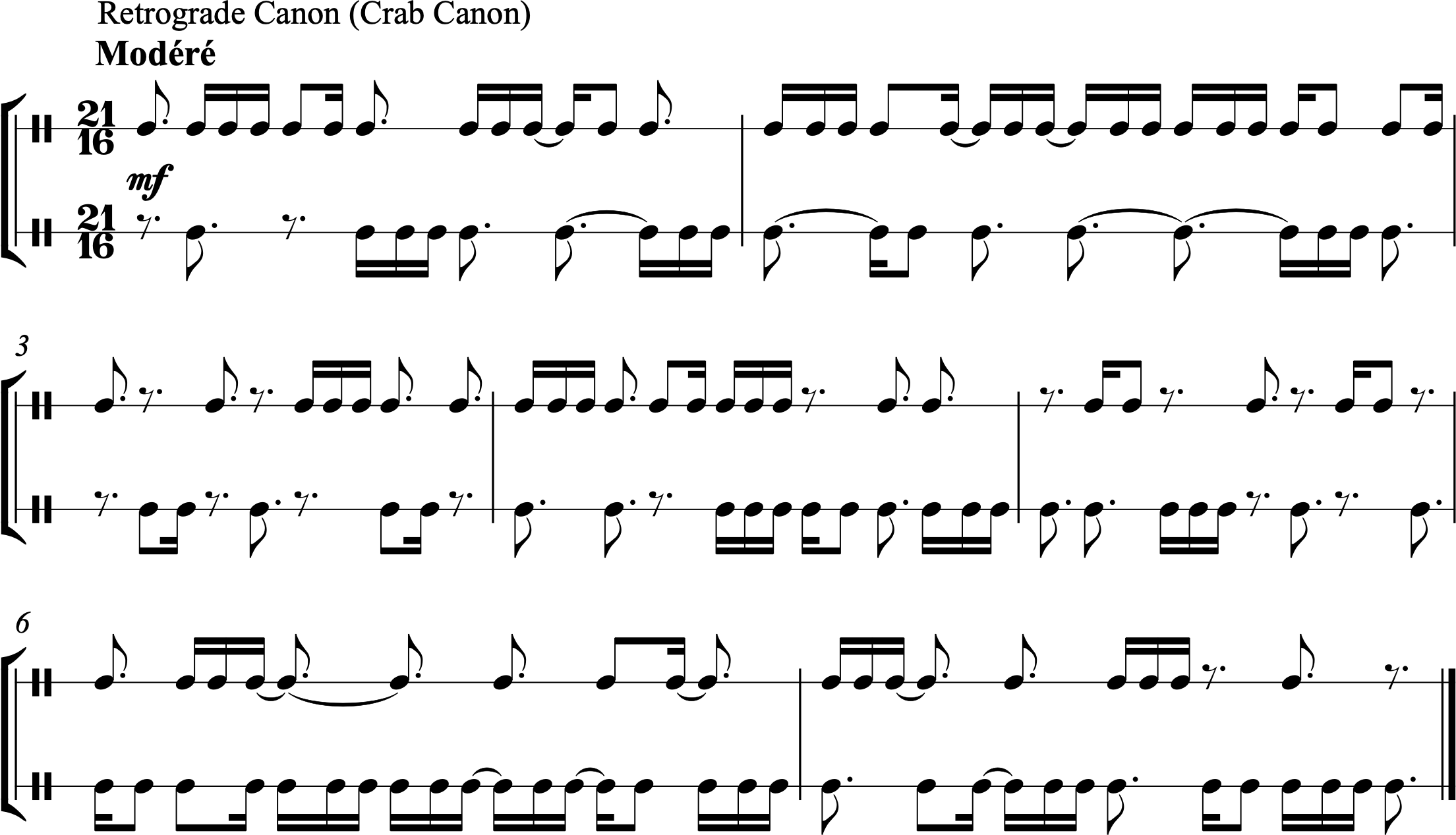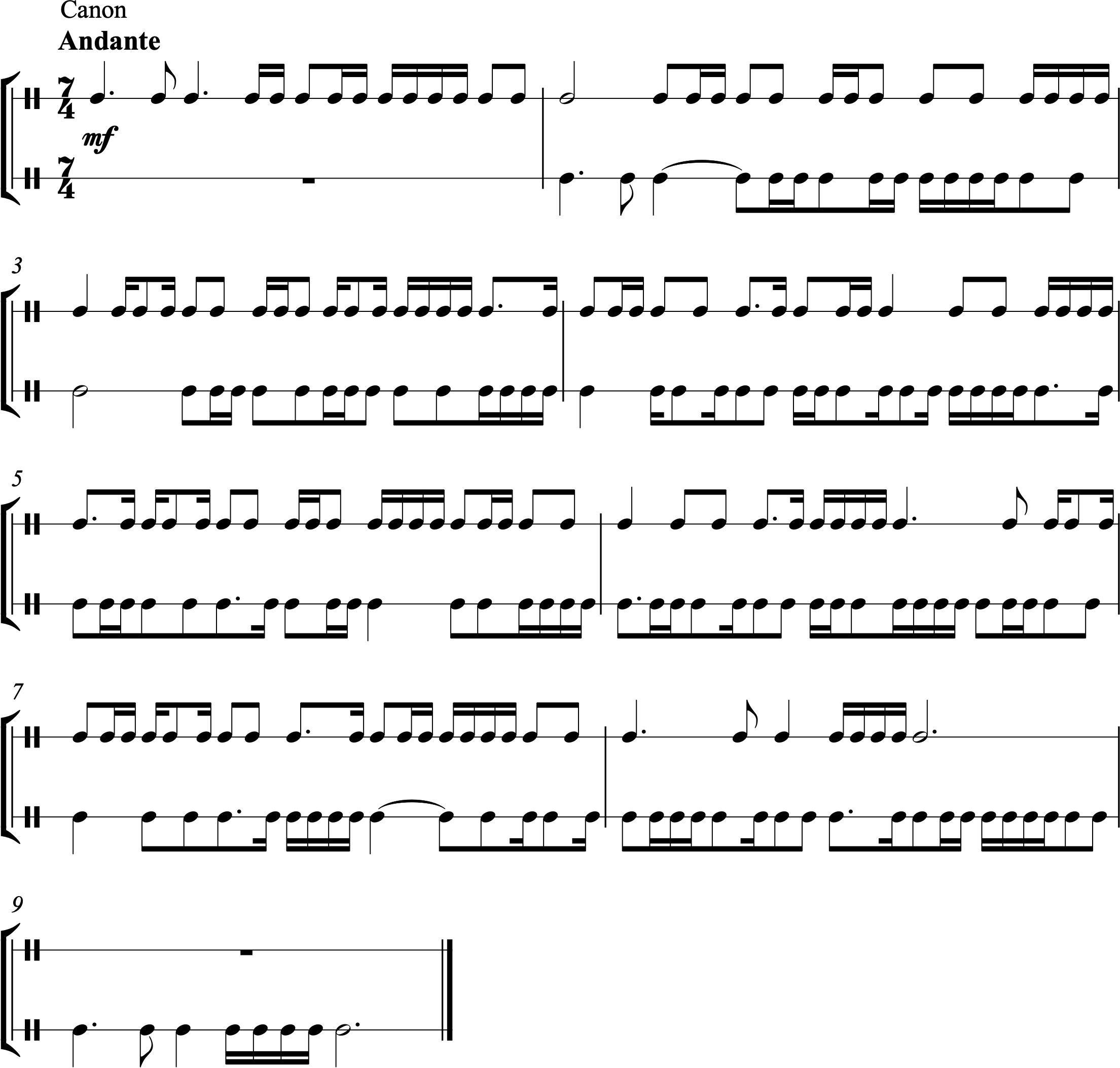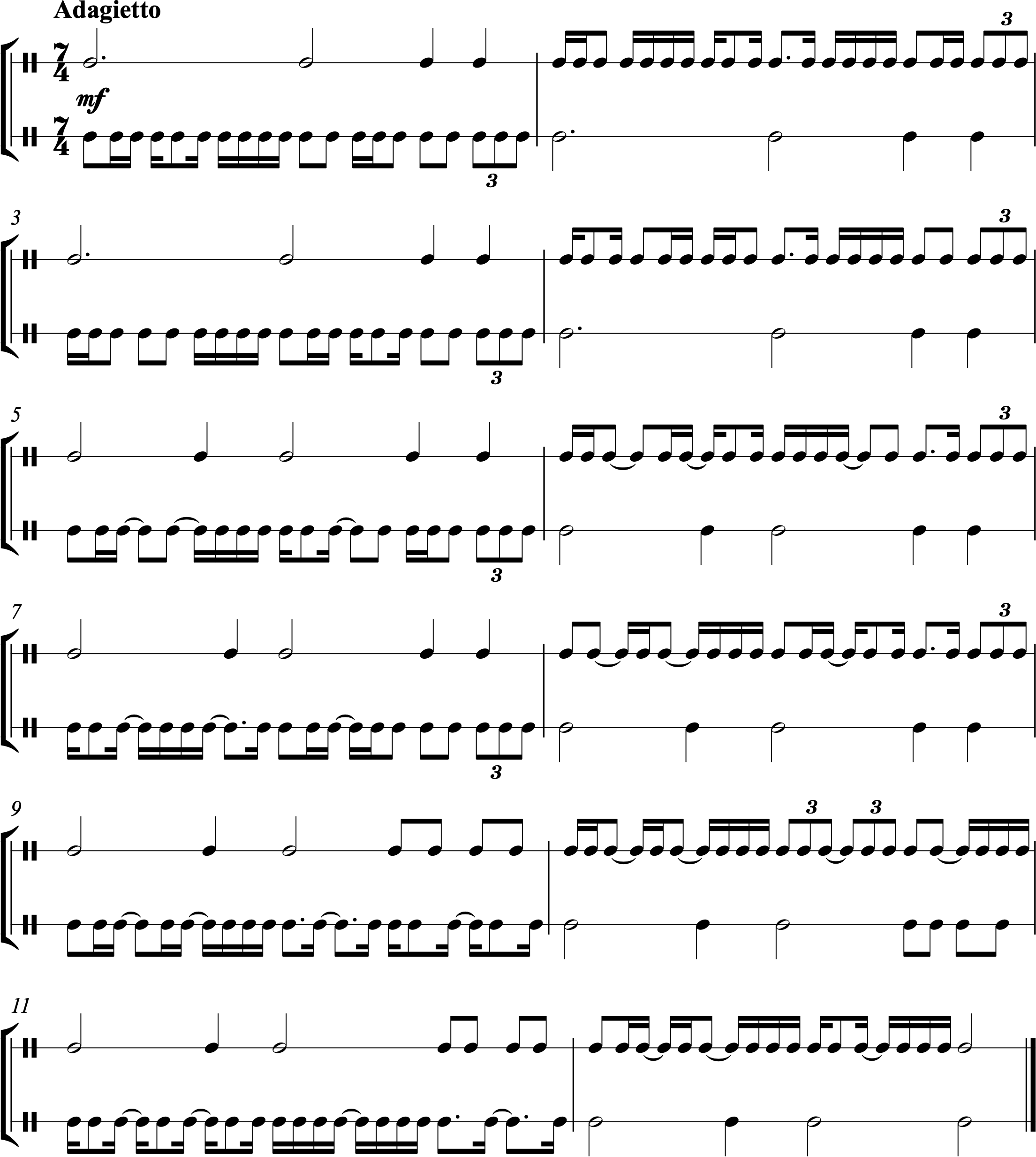Chapter 16: Quintuple and Septuple Meters
About This Chapter
About This Chapter: In the previous 15 chapters, we’ve dealt with three kinds of meters—duple, triple, and quadruple. But meters can have more than four beats. In this chapter, we’ll encounter meters with five beats (called quintuple meters) and meters with seven beats (called septuple meters).
Rhythmic Syllables: The syllables we use for divisions will be the same as what we’ve seen in the previous 15 chapters. The big difference here is that we need to count to 5 in quintuple meters because there are 5 beats in the measure and we need to count to 7 in septuple meters because there are 7 beats in the measure. Since the word “seven” has two syllables, we will use “sev” as a one-syllable stand-in when performing in septuple meters.
Conducting: Our duple, triple, and quadruple patterns won’t work for measures with 5 or 7 beats. There are several ways of conducting quintuple and septuple meters. We’ll look at a few here.
One way to conduct a quintuple meter is to take a quadruple conducting pattern and add an extra beat to one half of the pattern. In the figure below, there are two “in” strokes. This creates a quintuple pattern: down, then in, then in again, then out, then back up.
In the next figure, on the other hand, the extra beat is in the second half of the measure. There are two “out” strokes. The quintuple pattern here is: down, then in, then out, then out again, then back up.
In septuple meters, we can do something similar. In the following two figures, extra “in” and “out” beats have been added. In the first one, the first half of the measure has four beats, while the second half of the measure has three beats. The septuple pattern is: down, then in, then in again, then in again, then out, then out again, then back up.
In the next figure, the first half of the measure has three beats, while the second half of the measure has four beats. The septuple pattern is: down, then in, then in again, then out, then out again, then out again, then back up.
For each of these quintuple and septuple conducting patterns, you should choose where the extra beats go based on how the beats seem to group. If the rhythms in a quintuple meter example seem to group into 3 beats + 2 beats, put the “extra” conducting stroke in the first half of the conducting pattern, as an “in.” If the rhythms group into 2 beats + 3 beats, put the “extra” conducting stroke in the second half of the conducting pattern, as an “out.”
There are numerous other ways to conduct quintuple and septuple meters. We won’t take the time to explore them all here, but as an example, you could conduct a measure of septuple meter that groups into 3 beats + 2 beats + 2 beats as a measure of 3, then two measures of 2.
Section A—Quintuple meters
Practice
Practice A:
 Practice by performing along with this audio file, which features a metronome click and the notated rhythm. You will hear one measure of wood block to establish the tempo before the exercise begins.
Practice by performing along with this audio file, which features a metronome click and the notated rhythm. You will hear one measure of wood block to establish the tempo before the exercise begins.
Next, try performing along with this audio file, which features the notated rhythm but no metronome click. You will hear one measure of wood block to establish the tempo before the exercise begins.
1.
2.
3.
4.
5.
6.
7.
8.
9.
10.
11.
12.
13.
14.
15.
16.
17.
18.
19.
20.
21.
22.
23.
24.
25.
Section B—Two-part rhythms in quintuple meters
26.
27.
28.
29.
30.
31.
Section C—Septuple meters
Practice
Practice C:
 Practice by performing along with this audio file, which features a metronome click and the notated rhythm. You will hear one measure of wood block to establish the tempo before the exercise begins.
Practice by performing along with this audio file, which features a metronome click and the notated rhythm. You will hear one measure of wood block to establish the tempo before the exercise begins.
Next, try performing along with this audio file, which features the notated rhythm but no metronome click. You will hear one measure of wood block to establish the tempo before the exercise begins.
32.
33.
34.
35.
36.
37.
38.
39.
40.
41.
42.
43.
44.
45.
46.
47.
48.
49.
50.
Section D—Two-part rhythms in septuple meters
51.
52.
53.
54.
55.
56.

